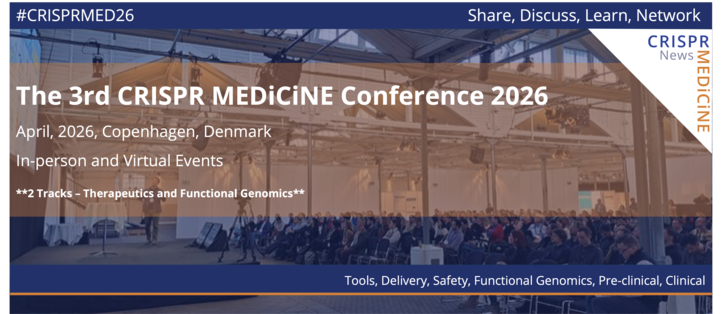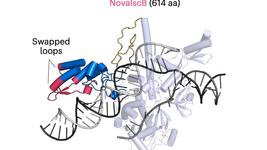CMN Weekly (13 October 2023) - Your Weekly CRISPR Medicine News
By: Gorm Palmgren - Oct. 13, 2023
Top picks
- A new study by researchers from eGenesis highlights the potential of porcine organs for human transplantation, with genetically engineered pig kidneys proving successful in a cynomolgus monkey model. The engineered kidney carried 69 CRISPR-Cas9 edits, notably eliminating specific antigens and enhancing human immune compatibility. The median survival time for xenotransplanted monkeys was 176 days, while one survived over two years (758 days).
- CRISPR-Cas9 has successfully been used to create chickens with resistance to avian flu. The British researchers targeted the ANP32 gene family that the influenza A virus relies on for infection. Removal of three ANP32 genes eliminated all viral growth in chicken cells.
Research
- Researchers in France have explored TALEN-mediated gene editing as a potential treatment for the life-threatening immunodeficiency, activated phosphoinositide 3-kinase δ syndrome type 1 (APDS1), caused by mutations in the PIK3CD gene. Correction of the mutated PIK3CD gene in APDS1 T-cells normalised key signalling pathways and restored their cytotoxic functions.
- Using a one-step electroporation method, researchers have achieved SHP-1 deletion and CD133 CAR gene over-expression in human T cells, enhancing their antitumor efficacy. The SHP-1 deletion in CD133 CAR T cells improved their effectiveness against glioma cell lines, suggesting SHP-1 as a promising target for CAR T cell immunotherapy.
- A novel system allows the RNA-specific Cas13a nuclease to target small noncoding RNA (sncRNA) that usually are too short for forming crRNA–target RNA hybrids. The FCECas13a system employs a 3′-terminal foldback crRNA that hybridises with the target ultrashort sncRNA, creating a double strand that "tricks" the Cas13a nuclease into generating trans-cleavage activity.
- American researchers have developed CRISPR-DREAM, a compact engineered human mechanosensitive transactivation module that enables potent and versatile synthetic transcriptional control. CRISPR-DREAM displays robust activation at human promoters, has high specificity and is robust across cell types.
- A novel gene-drive system based on Cas12a can be regulated via temperature modulation in insects. The development of Cas12a-mediated gene drives provides an innovative option for designing next-generation vector control strategies to combat disease vectors and agricultural pests.
Detection
- Magnetically driven bacterial microrobots displaying the Cas12a protein on their surface have been used to detect aquatic pathogen nucleic acid. The bacterial microrobots cruise flexibly and rapidly, and they achieve sensitive, rapid, and accurate on-site nucleic acid detection, with detection limits of 7-8 copies μL-1 for various viruses.
- Chinese researchers have developed a new CRISPR-Cas-based method for detecting Mycobacterium tuberculosis, the zoonotic bacterium that causes tuberculosis. The new TB-CRISPR technique uses recombinase-mediated isothermal nucleic acid amplification (RAA) and "two-level" amplification of the detection signal and achieves sensitivity and specificity values of 0.883 and 0.940, respectively.
- Researchers in China have developed the new MARPLES platform that uses multiplex nucleic acid amplification with Cas12a for rapid diagnosis of disease. Tested on hand, foot, and mouth disease and influenza A specimens, it matched 100% with qRT-PCR results.
- Chinese researchers have developed low-background CRISPR-Cas12a sensors for versatile live-cell biosensing of different targets, including nucleic acid (miR-21), biological small molecules (ATP), and enzymes (hOGG1). The sensors use various strategies such as strand displacement, strand cleavage, and aptamer-substrate interaction to reactivate the inhibited enzyme activity, and they are demonstrated to work well in live cells.
Reviews
- Advances towards personalised therapies for Stargardt disease. This review explores personalised treatments for STGD1, focusing on therapeutic alternative splicing, genome editing, and translational read-through technologies.
- Delivery of gene editing therapeutics. This review highlights different CRISPR-Cas gene delivery systems for treating and preventing a broad range of infectious, inflammatory, genetic, and degenerative diseases.
- Treatment of congenital coagulopathies, from biologic to biotechnological drugs: The relevance of gene editing (CRISPR/Cas). This review discusses how rare coagulopathies such as haemophilia A and B, or even ultra-rare ones such as factor V deficiency, could be among those deriving the most significant benefit from developing gene editing strategies.
- Emerging programmable nuclease-based detection for food safety. This forum article provides an overview of recent advances and challenges in the novel paradigm of programmable nuclease-based detection for food safety.
- CRISPR/Cas and Argonaute-based biosensors for pathogen detection. This review discusses future challenges and prospects for developing the CRISPR-Cas systems and Argonaute (Ago) biosensors, especially electrochemical biosensors.
Conferences and meetings
- An event entitled "The CRISPR Patent Wars: Implication for Human Medical Use" is on for 2:20 PM ET, October 17. The event features four speakers and is part of Life Science Masters 2023, arranged by IPWatchdog Studios.
Commentaries
- In an interview by NewsMedical, James Brady from MaxCyte talks about how precision gene editing tools, such as CRISPR, base editing, and prime editing, have propelled cell-based therapeutics to the forefront of medical advancements. MaxCyte's electroporation platform introduces large molecules and combinations of molecules into a wide range of primary cell types, including blood cells and stem cells.
- In a post on PLOS Blogs, Ricki Lewis asks, "Is recent gene therapy setback for Duchenne Muscular Dystrophy (DMD) déjà vu all over again?". The setback he refers to is the recent tragic event of a young man DMD, who died just days after receiving gene therapy.
- In an Editors' note on Phys.org, Ailong Ke at CornellCAL is interviewed about CRISPR-Cas3 as a DNA shredder for gene therapy. Ke's work has paved the way for CRISPR-Cas3's potential application to treat human genetic diseases and to eradicate viruses, such as herpes and hepatitis B, that infect human cells persistently.
News from CRISPR Medicine News
- On Monday, we published an interview with Hamideh Parhiz at the University of Pennsylvania, who recently managed to edit haematopoietic stem cells in vivo by decorating lipid nanoparticles. The achievement offers a key alternative to ex vivo cell therapies.
To get more of the CRISPR Medicine News delivered to your inbox, sign up to the free weekly CMN Newsletter here.
Tags
CLINICAL TRIALS
Castration-Resistant Prostate Cancer, CRPC, and Salivary Gland Cancer, SGC, (NCT04249947)
Sponsors:
Poseida Therapeutics, Inc.
Sponsors:
Poseida Therapeutics, Inc.
IND Enabling
Phase I
Phase II
Phase III
IND Enabling
Phase I
Phase II
Phase III
IND Enabling
Phase I
Phase II
Phase III







